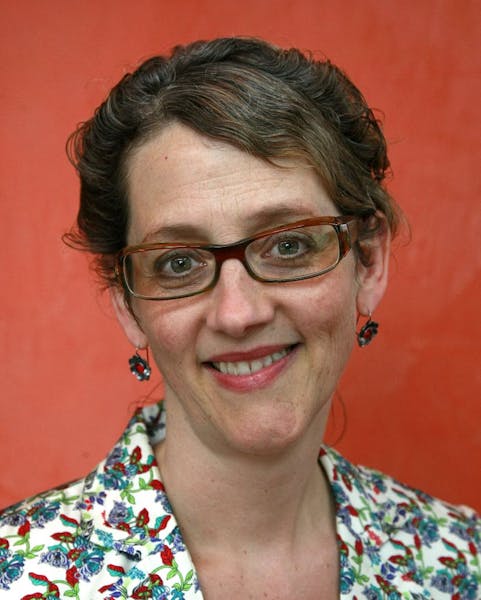Surprising as it may seem, Alice Waters wasn't always obsessed with finding the perfect peach.
When her restaurant, Chez Panisse, opened in Berkeley, Calif., 40 years ago, there were no foragers at her fingertips. Nor were there fishmongers, artisan bakers or organic farmers.
In fact, there was little resembling a plan -- or even a philosophy. It was simply about the vision of a 27-year-old who had returned from studying abroad in France and wanted to share the experience, and the food, with her friends.
In four decades, Chez Panisse has survived growing pains and a fire. It spawned a more casual cafe. As a breeding ground for many talented chefs, the restaurant -- with Waters firmly behind it -- helped to ignite a culinary movement that has brought the ingredients of small producers into the kitchen and, ultimately, onto the plate. Through it all, several recipes have emerged that help to define the past four decades.
In the beginning, however, it was all blind optimism.
"I really just wanted it to be like one of those little French restaurants that I loved to go to in Paris," Waters recalls, "like eating at home in the sense that only one three-course meal would be served."
In the early days, there was pâté en croute, duck with olives, a green salad and cheese after every meal. And in that first decade, there was Lindsey Shere's almond tart (see recipe on T3).
Shere was the original pastry chef at Chez Panisse, and her only "audition" was through years of dinner parties with Waters at the table. The almond tart was on the menu within the first week. (Today Stacie Pierce, formerly of Minneapolis, is the pastry chef.)
Waters cobbled together much of her kitchen staff in the same manner, pulling from her wide circle of talented, artistic friends. Shere, Paul Aratow and Victoria Wise were in the kitchen from the start -- it would be two more years before Jeremiah Tower would rise to fame as the head chef at Chez Panisse -- and Waters herself ran the dining room, where she was more comfortable. She, like the others, had some trepidation about cooking for a crowd.
Like any brand-new restaurant and staff, Chez Panisse figured things out through trial and error. And like any new restaurant, there was plenty of error -- food wasted, reservation no-shows -- which translated into money lost. Waters says she never worried.
Years before it would become a trend, Chez Panisse opened a more casual cafe upstairs from the main dining room, serving an a la carte menu at affordable prices. The thought was that the quick-turnover cafe would help support the main dining room downstairs.
The cafe menu also changed often, but the selection was larger, and there were dishes that went on the menu and stayed put, like the baked goat cheese with garden lettuces (see recipe). Though Waters was never truly in the kitchen, the goat cheese salad was all hers.
Refocusing mission
Goat cheese came from Laura Chenel, who at the time was a small, independent producer. Chenel sold her company five years ago but is considered one of the pioneers of American goat cheese production.
"She was probably the first to order from me," Chenel says of Waters. Before Chez Panisse, Chenel had always assumed she would sell the cheese retail. "It hadn't ever occurred to me that restaurants would use it," she says.
In the second decade, that goat cheese with garden lettuces became a symbol of something even bigger -- not just for Chenel but also for other small artisans and producers.
"In the first decade, we were looking for taste," Waters says. "We were not looking for organic farmers. But then, of course, we found them, because that was what tasted best. When that came together for me, it was a revelation."
And that notion -- to support and celebrate those small organic farmers and artisan producers -- became the mission of the restaurant.
It was toward the end of the second decade, she says, that she realized Chez Panisse could be -- would be -- an institution.
A few years before, Paul Bertolli had come on as head chef, bringing with him a passion for all things Italian.
Fresh from a year working abroad, Bertolli was eager to steer the menu in an Italian direction, and Waters, in the midst of traveling back and forth herself, was all too happy to oblige.
"Her idea of French cuisine was really Provence and the south," says Bertolli, adding that it was about people who were connected with the soil and the farmers -- not, he says, butter and scallops and haute cuisine. "So in that sense, Italy and Provence are very similar. It wasn't really a far cry for me to come in and say I wanted to do that."
A spit was built in the fireplace; Waters says that live fire is, and always has been, a mainstay in the restaurant. Bertolli remembers how they'd cook whole animals on the spit and use every part to create stocks, sauces and roasts. They'd light the fireplace during the day and cook fresh shelling beans with herbs to serve alongside them, using the broth from the pork bones to moisten the beans.
Fresh, available food
"What Chez Panisse was all about was finding a farmer and finding a ranch and bringing it all together in front of the fire," Bertolli says. "It wasn't a recipe so much as an ethos."
The roasted pork and shelling beans (see recipes) are representative of that ethos, and though Bertolli left in the early '90s, his legacy was that rustic style of cooking, using whatever was fresh and available. That Italian sensibility would stay at the forefront through much of the third decade and, still, in many cases, today. Shelling beans that were on hand in late August, pork from a patchwork of pig farmers -- such were the examples of the Chez Panisse philosophy.
"Seasonal, local, sustainable" is a mantra that has become the backbone of California cuisine, enough to become almost a cliché. It began early at the restaurant, but it wasn't until the past 10 years that this idea spilled beyond fruits, vegetables and legumes to include protein -- like salmon.
"Salmon is a really important story of the restaurant," Waters says. "We realized at the beginning of the fourth decade that we were eating it all year, and by the time late spring came around" -- salmon season in Northern California -- "we were so bored of it that we stopped paying attention."
At that point, she says, they made the decision to serve the fish only during its regular season. The recent years when there was no season? "Too bad, no salmon," she says with a shrug.
"I think that over the years, especially within the last 10, we've been concerned with social and environmental causes," says David Tanis. The restaurant co-chef came on board at the cafe in the mid-'80s and now splits his time with Jean-Pierre Moullé. "Local and seasonal is obviously always at the forefront as well."
Constant change
As for the fifth decade and beyond, Tanis and Waters feel that the restaurant will continue to change.
"It has to evolve, it just has to," Waters says. It's become a teaching institution along the way -- something she knows they'll keep up.
Tanis, who is leaving Chez Panisse in the fall after decades at the stove, agrees.
"The influence of new people means that there is a constant change, and I don't think it's stopping." Maybe it will go vegetarian, he muses. "Or maybe it will only get simpler."
And as Waters knows best, simple is what it's all about. That, and finding the perfect peach.

Helen Simonson is in Jane Austen mode with 'The Hazelbourne Ladies Motorcycle and Flying Club'

Frank Stella, towering artist and master of reinvention, dies at 87
Angel Reese, Cardoso debuts watched widely on fan's livestream after WNBA is unable to broadcast

